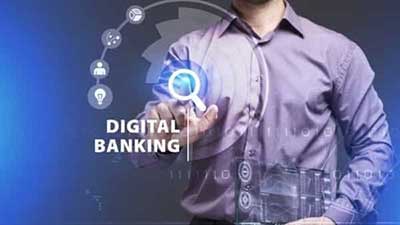Relevance: GS-3: Indian Economy and issues relating to planning, mobilization, of resources, growth, development and employment.
Key Phrases: Digital payments, fintech innovations, digital business facilitator, current accounts, financial inclusion, end-to-end digital processing, recurring deposit accounts, NBFCs,neobanks.
Why in News?
- Finance Minister recently reiterated Budget announcement on setting up 75 digital banking units in 75 districts of the country this year.
- This is to take forward the government’s agenda of digital financial inclusion.
What was the Announcement?
- In the Budget for 2022-23, the Finance Minister had said: “In recent years, digital banking, digital payments and fintech innovations have grown at a rapid pace in the country.
- Government is continuously encouraging these sectors to ensure that the benefits of digital banking reach every nook and corner of the country in a consumer-friendly manner.
- Taking forward this agenda, and to mark 75 years of our independence, it is proposed to set up 75 Digital Banking Units (DBUs) in 75 districts of the country by Scheduled Commercial Banks”.
Some Terminologies
- FinTech:
- FinTech (financial technology) is a catch-all term referring to software, mobile applications, and other technologies created to improve and automate traditional forms of finance for businesses and consumers alike.
- Neobanks:
- A neobank (also known as an online bank, internet-only bank, virtual bank or digital bank) is a type of direct bank that operates exclusively online without traditional physical branch networks.
- Non banking financial companies:
- Nonbank financial companies (NBFCs) are entities that provide bank-like financial services but don't hold a banking license and are unregulated.
What are these DBUs?
- A digital banking unit is a specialised fixed point business unit or hub housing certain minimum digital infrastructure for delivering digital banking products and services as well as servicing existing financial products and services digitally in self-service mode at any time.
- Recently the Reserve Bank of India announced the guidelines for DBUs, following the report of a working group of the Indian Banks Association.
- The aim DBU is to enable customers to have cost effective and convenient access and enhanced digital experience of such products and services in “an efficient, paperless, secured and connected environment with most services being available in self-service mode at any time, all year round.
RBI Guidelines about DBUs
- Commercial banks (other than regional rural banks, payment banks and local area banks) with past digital banking experience are permitted to open DBUs in tier 1 to tier 6 centres, unless otherwise specifically restricted, without having the need to take permission from the RBI in each case.
- Each DBU should be housed distinctly, with separate entry and exit provisions. “They will be separate from an existing banking outlet with formats and designs most appropriate for digital banking users.
- DBUs of the banks will be treated as banking outlets.
- DBU must be headed by a senior and experienced executive of the bank who can be designated as the DBU’s Chief Operating Officer (COO).
- The banks will have the options to engage digital business facilitator/ business correspondents to expand the virtual footprint of DBUs.

Services Provided by DBUs
- Digital banking units can enable last-mile financial inclusion as a lender can reach a wider customer base in a more cost-effective manner.
- As per the RBI, each DBU must offer certain minimum digital banking products and services. Such products should be on both liabilities and assets side of the balance sheet of the digital banking segment.
- Digitally value-added services to conventional products would also qualify as such.
- The services include savings bank accounts under various schemes, current accounts, fixed deposits and recurring deposit accounts, digital kit for customers, mobile banking, Internet banking, debit cards, credit cards, and mass transit system cards, digital kit for merchants, UPI QR code, BHIM Aadhaar and point of sale (PoS).
- Other services include making applications for and onboarding of customers for identified retail, MSME or schematic loans.
- This may also include end-to-end digital processing of such loans, starting from online application to disbursal and identified government sponsored schemes that are covered under the national portal.
Cons of DBUs
- There is low public awareness.
- Internet penetration in lower-tier cities is low.
- There is threat of cyber security and data privacy
How will these DBUs compete with fintechs?
- Currently, fintechs operating as neobanks offer digital banking services but they do so in partnership with non-banking financial companies (NBFCs).
- Some of the neobanks offering services in India are Jupiter, Fi Money, Niyo, Razorpay X.
- Compared to conventional banks with online and mobile banking facilities, neobanks or digital banks excel at product innovation and offer far better digital solutions.
- However, given the arrangement they have currently with NBFCs or scheduled banks to conduct the actual banking part, some in the industry have pegged these digital banks as “glorified digital distribution companies”.
Conclusion
- The digital economy is growing rapidly. All parts of the economy, including commerce, financing and logistics, need next-generation solutions.
- The Government’s focus on training human capital and launching courses in this direction is very welcome. This will also help in reskilling human capital for the new-generation economy.
- However Further, challenges such as cyber security, data privacy and phishing need to be resolved if DBUs are to reach their full potential.
Sources: Indian Express
Mains Question:
Q. What are Digital Banking Units? How will it boost India’s digital economy? (250 Words).








